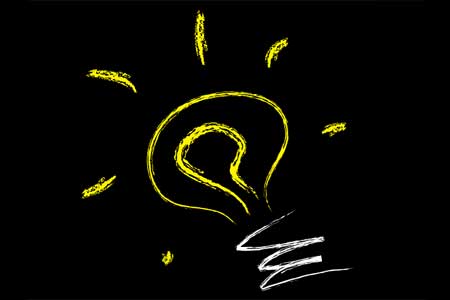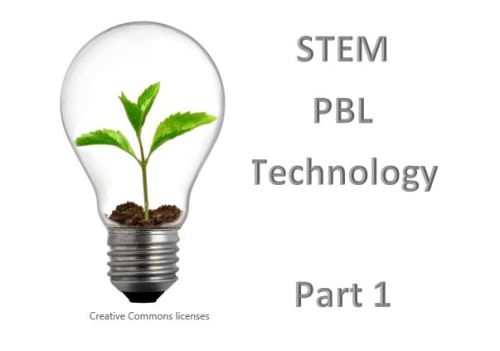Part 1: STEM, STEAM, Makers: Connecting Project Based Learning (PBL)


Welcome to a series that brings STEM, STEAM, and Maker Space together with Project Based Learning and proper technology integration in the classroom. You will discover around one hundred resources in this series along with some great ideas for finding student success. Before reading, please take a moment to subscribe by email or RSS and also give me a follow on Twitter at mjgormans. I promise you will find some great information coming your way in the posts that follow…So sign up now and please pass this on with a retweet. – Mike Gorman (https://21centuryedtech.wordpress.com/)
Part 1: STEM, STEAM, Makers: Connecting Project Based Learning (PBL)
“Method means that arrangement of subject matter which makes it most effective in use. Never is method something outside of the material. " – John Dewey
The above quote from John Dewey is one that often reminds me of the way STEM, PBL, and technology come together in a wonderful manner. STEM (or STEAM) includes those all-important content standards from the areas of science, technology, engineering, and math. While emphasizing these areas is important we must go beyond thinking of STEM content. In the first part of Dewey’s quote we explore the concept of arrangement in the idea of “…. arrangement of subject matter which makes it most effective in use …” How often are many of the STEM related subjects taught in isolation of other subject areas? Perhaps Algebra is better taught with Physics, or Geometry is included in an Engineering course of study. Think of how genuine meaning could be facilitated as connections are made between the content areas. In fact, there are so many other subject areas that could be used to magnify learning in the STEM areas including language arts, the fine arts, and social studies. Are our schools providing a delivery of subject matter that allows for this effective use during the course of a school day? Have schools streamlined their schedules to allow subjects to be connected allowing for increased productivity? It is important that we examine the arrangement of the STEM subjects in relationship to each other and the other important content areas. True STEM calls for educators to be intentional about this arrangement.
Let’s take a closer look at Dewey’s quote and his idea of a method. Note that he starts with the idea of a method in an arrangement, and then states, “Never is method something outside of the material.”. The idea of method reminds us that STEM must go beyond content. In fact, it must include effective processes for learning. STEM must go outside of learning isolated content, Instead, it must focus on content standards along with proper pedagogy. This requires going beyond STEM activities and simple inquiry. When working with STEM schools I often suggest that they investigate PBL (Project Based Learning) and include it as their pedagogy or process. PBL provides an important process and pedagogy that allows for the integrated delivery of this content. PBL provides students the important need to know and inquiry, which allows for higher level learning. Technology integration provides tools to drive this process. PBL also demands that students not just repeat, but also understand STEM concepts in depth while making relationships to real world applications. It is no longer acceptable to just find the answer to a math equation. Students must be able to apply their STEM skills to the real world. PBL, with its emphasis on authenticity, connections, inquiry, and process, is able to provide these disciplines a necessary pedagogy. It allows students to own their learning while promoting the inquiry of science, resourcefulness of technology, design principles found in engineering, and application of math.
As we look at the entire quote once again, ““Method means that arrangement of subject matter which makes it most effective in use. Never is method something outside of the material. ”, it becomes evident that the influx of technology plays an important role. Keep in mind the role effective use of technology provides in facilitating the concept Dewey suggests in the concept of method, material, and arrangement of subject matter. Today’s technology provides both an opportunity for students to learn and inquire, as well as to produce, publish, and connect to the real world. It is the technology integration that provides the ability to amplify the content of STEM and the process of PBL. Through this amplification our students become engaged and can enter a flow, allowing for authentic and exciting learning opportunities. While the computer is important, one must think beyond the device! Imagine what John Dewey would do with all of the technological possibilities of today!
I do hope you can begin to see why we must go beyond the STEM content and understand how it relates to all subject areas. It must be integrated in a way that makes sense and is both productive and effective. STEM goes beyond concepts, theories, and factoids of information. It also goes beyond activities and inquiry experiences. It must contain a process that makes all of this understandable and comprehended while providing authentic learning experiences that connect to the real world. Educational use of technology must take it far beyond a land, passion, and adventure that Dewey may never have dreamed of. Follow me in the coming series as I explore resources that can help make this exciting journey of STEM learning possible. Explore the PBL based resources below and remember, ““Method means that arrangement of subject matter which makes it most effective in use. Never is method something outside of the material. ”– John Dewey
Tools and ideas to transform education. Sign up below.
PBL Project Resources
BIE Tools – PBL Project Search – Here you will find a collection of 450 proven lesson plans to set any PBL desire into action. Look at the database but also click on the home tab to view the entire site.
West Virginia PBL Project Data Base – This is a wonderful site where teachers can search through the subjects of reading, language arts, math, science, social studies, dance, visual arts, theater, and music. You can select from grade two all the way through grade twelve. These are PBL projects made by teachers for teachers!
Learning Reviews – This website claims to connect kids to learning on the web. It really connects kids to awesome, engaging, rigorous, and relevant projects. It points to numerous websites on the internet that house some great PBL possibilities. Be sure to check out all of the subjects and grade levels.
Here are more than 30 websites with free PBL examples, guidance, rubrics, and templates. To see project-based learning lessons sorted by subject go to:
- PBL Language Arts Projects by grade level
- PBL Science Lesson Ideas by topic
- PBL Math Project Ideas by topic
- PBL Social Studies Project Ideas by grade level
Others
- Project Foundry– Great collection of PBL resources, projects, and ideas
- Edutopia –This link brings you to a wonderful PBL treasure chest of ideas, resources, and research.
- PBL Resources from Bob Pearlman – Ideas and concepts from one of PBL’s best gurus.
- PBL Academy – Collection of PBL projects including a concentration of math ideas.
- High Tech High School– Selection of PBL projects from High Tech High in San Diego, California
- Envision SchoolsProject Exchange – Collection of projects from Envision Schools
- Virtual Schoolhouse– Online and blended PBL ideas for projects
- The Teaching Channel – Great videos to learn more about PBL
- Intel – Designing effective projects is the base for this guide
Next in the Series… Forty Amazing STEM Sites Filled With Wonderful ReEsources!
cross-posted at 21centuryedtech.wordpress.com
Michael Gorman oversees one-to-one laptop programs and digital professional development for Southwest Allen County Schools near Fort Wayne, Indiana. He is a consultant for Discovery Education, ISTE, My Big Campus, and November Learning and is on the National Faculty for The Buck Institute for Education. His awards include district Teacher of the Year, Indiana STEM Educator of the Year and Microsoft’s 365 Global Education Hero. Read more at 21centuryedtech.wordpress.com.
